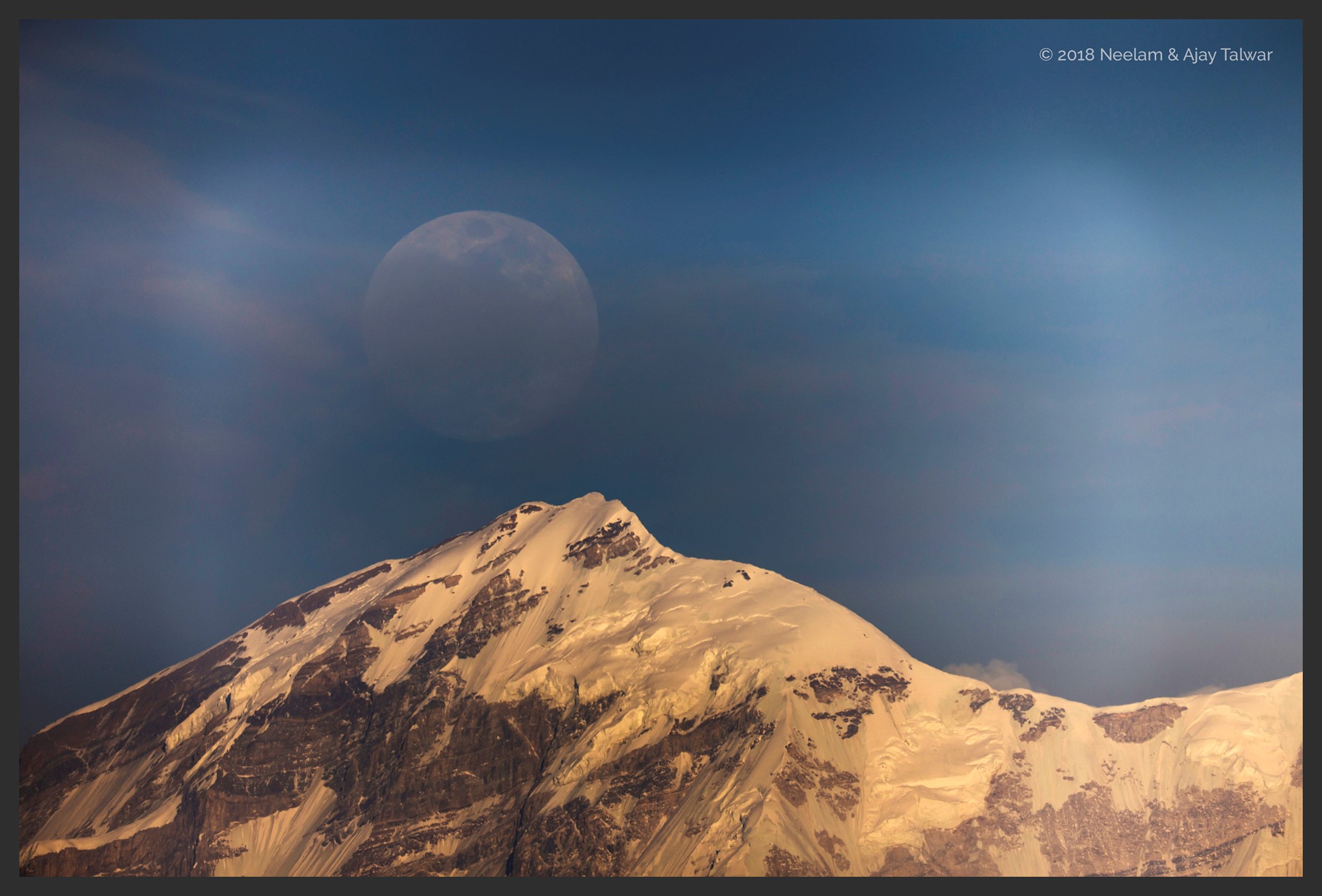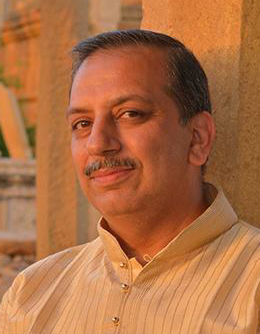GAM 2018 Blog
- Published: Saturday, April 07 2018 09:00
By Ajay Talwar
|
Recently the media has gone ga-ga over the ‘Super Blue Blood Moon’. In the days before the eclipse, the media frenzy was climbing higher and higher in India. I personally abhor the term Blood Moon. It’s an eclipse, turns red due to well-known reasons and if seen from a dark location, is of a beautiful colour, nothing to do with blood. Astrologers in India garnered a lot of attention and money by fooling people with dire consequences using this opportunity, as always and helped by the media having the same purpose. The juxtaposition of astrologers and electronic media benefitted both these charlatans. Lunar Eclipse Family ExpeditionMe and my family were more interested in the juxtaposition of the rising eclipsed Moon and a prominent peak in the Himalayas. Our planning started off many moons (months) ahead of the eclipse date – 31st January 2018. Location selection was the main criteria to put the eclipsed moon behind a peak. Nanda Devi is a celebrated, revered, high peak in the Indian Himalayas. Initially, we tried to find a place from where we could shoot the Moon behind Nanda Devi. Unfortunately, Nanda Devi cannot be seen from such a location because it gets behind the Trisul Massif. We shifted our focus from Nanda Devi to Trisul peak. |

|
The key factor in our family expedition was the location, or rather finding the perfect location which would provide a clear unobstructed landscape view of the Trisul. The other condition was that on 31st January the direction of celestial object Moon should match with the terrestrial Trisul Massif. Several websites and apps are available to locate just the location. One such software is Peakfinder. But when you actually try to find a good location using this software, you quickly get lost. The Himalayas are a vast place, even on the map. Eventually, we were helped by the friendly people of The Himalayan Group on Facebook. The collective knowledge experience of this group is tremendous. |

|
We found Benital. A small lake, a flat meadow near the well-known religious town of Karnaprayag. It was calculated to be a perfect location to observe and photograph the juxtaposition of Moon and Trisul together. Benital is not very high, less than 7000 feet. It’s an open level meadow, lots of clean flat space. We reached this wonderous place well ahead of time, one day earlier from the date of the eclipse. What a panoramic view! 120 degrees of Snow-capped Himalayan peaks starting from Bandarpunch to Trisul and Tharkot spread before us. Chaukhamba peaks exactly towards the north and the highest one Trisul I and Trisul II. All four of the family worked towards shooting the location, moonrise one day before and finally on the day of the eclipse. There were a lot of clouds on the peak on the day of the eclipse, but we kept on shooting and some time later, when the Moon was totally eclipsed it appeared gloriously between the clouds. |

|
Two days later we were rewarded with our image published on the Astronomy Picture of the Day. Back home we worked on creating a 10 minute movie. The movie was selected to be screened at the 2018 Mountain Film Festival (Indian Mountaineering Foundation). This is a completely homebrewed movie. It was made by teenagers Nakul & Arjune, Neelam and myself. Nakul flew all the drone flights and shot the videos at all locations. More importantly, he planned all shots before each flight. Arjune has burned the midnight LED and completely build up all musical notes from scratch. Arjune also shot several time-lapse sequences at Benital. Neelam and I have gathered video, still and time-lapse footage. The movie has 4 sections - reaching Benital via Alaknanda and Pinder, setting up camp at Benital, a day before the eclipse the Moon rose behind Trisul. On the eclipse evening we had a lot of clouds, and though we were not able to capture the eclipsed Moon behind Trisul II, we did get to capture the Crimson Eclipsed Moon a while later. In some of the shots, you can see the Beehive cluster of stars nearby the eclipsed Moon. Please see the movie at this link. |


Eclipse From The Ends Of The EarthEnlarge the image to fill the screen. Squint your eyes to match the two eclipsed Moons, let your eyes get comfortable for a few seconds and then watch the Moon hanging much in front of the Beehive cluster, far behind. These images have been clicked from the ends of the Earth at the same time, On the right is the image shot by Tunç Tezel from Kilauea, Hawaii and on the left is the image shot by Neelam & Ajay from Benital in India. |
|
Ajay Talwar, TWAN photographer from India hopes to photograph the many natural and historical wonders in India at night under the stars. During his school days, Ajay Talwar was always working on some science projects. He had built a simple telescope with a cardboard and lenses bought at the flea market. During college days in 1985-86, Comet Halley was visible in the skies. Ajay visited a place called Ganga Sagar about a hundred kilometres from Calcutta and saw the comet very nicely from that remote place. His interest in astronomy was ignited on that trip. Ajay took up astrophotography because it was difficult and not many people were pursuing it. It was taken as a challenge, astrophotography used to be quite difficult with film cameras. With the advent of digital cameras, astrophotography became easy, primarily because the results are instantaneous, and one could correct a mistake right away. In the film days correcting a mistake was a process which took a month or two! |
 |
|
Recently his TWAN style work was exhibited at a pan India festival of photography in public spaces called “Fete de la Photo” organised by the French Cultural Institute in India. The exhibition ran in eight cities across India. Sky Photo Trip – is the name of the astrophotography workshop that he conducts in the Himalayas regularly. Ajay lives in Gurgaon a suburb of New Delhi, but his heart lives in the Himalayas where stars shine brightly, from Nanda Devi to the zenith. |
|









